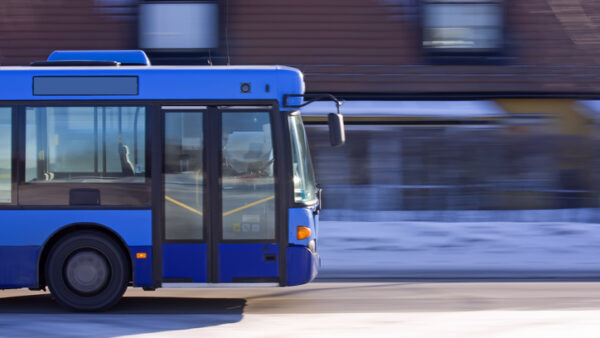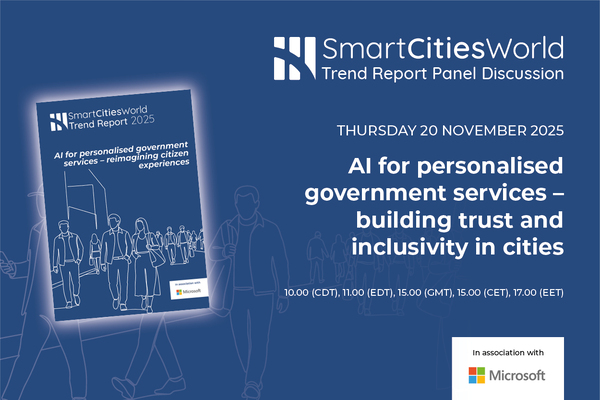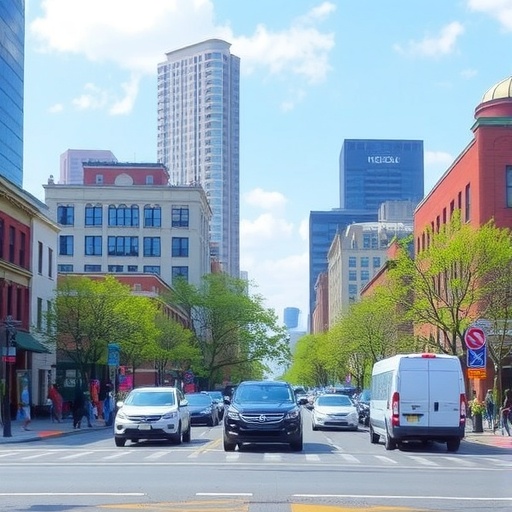Republican Transportation, Housing, and Urban Development Funding Bill Makes Cost of Living Crisis Worse – House.gov

Report on the Fiscal Year 2026 Transportation and Housing Funding Bill and its Implications for Sustainable Development Goals
Executive Summary
House Appropriations Committee Republicans have released the draft fiscal year 2026 Transportation, and Housing and Urban Development, and Related Agencies (THUD) funding bill. The proposed legislation allocates $89.9 billion in new funding, which, after accounting for housing revenues, totals $96.8 billion for federal transportation and housing programs. This represents a reduction of nearly $6 billion, or 6 percent, from 2025 levels. The bill’s provisions have significant implications for several United Nations Sustainable Development Goals (SDGs), particularly those related to poverty, inequality, infrastructure, and sustainable communities.
Primary Impacts on Sustainable Development Goals (SDGs)
The proposed funding reductions and policy changes present considerable challenges to the advancement of key SDGs within the United States. The primary areas of concern are affordable housing, public transportation, economic stability, and social equity.
SDG 11: Sustainable Cities and Communities
This goal, which focuses on making cities and human settlements inclusive, safe, resilient, and sustainable, is directly impacted by the bill.
- Target 11.1 (Affordable Housing): The bill is projected to threaten housing assistance for nearly 415,000 low-income households. This directly contravenes the objective of ensuring access to adequate, safe, and affordable housing and could increase rates of housing insecurity and homelessness.
- Target 11.2 (Sustainable Transport): By cutting investments in public transportation, including Amtrak, the bill undermines efforts to provide access to safe, affordable, and sustainable transport systems for all. This could lead to increased road congestion and reliance on private vehicles, counteracting sustainability objectives.
SDG 1: No Poverty & SDG 10: Reduced Inequalities
The legislation’s focus on cutting social programs disproportionately affects the most vulnerable populations, hindering progress on poverty reduction and equality.
- Impact on Low-Income Households: The reduction in housing assistance places a severe financial burden on low-income families, potentially pushing them further into poverty and increasing the risk of eviction.
- Erosion of Protections: The bill reportedly strips housing protections for vulnerable groups, including people with disabilities, veterans, and families with children. This action directly opposes SDG 10’s aim to reduce inequalities and ensure equal opportunity for all.
- Barriers to Homeownership: By making it more difficult to secure affordable housing and access homeownership, the bill may widen the wealth gap and perpetuate cycles of poverty.
SDG 9: Industry, Innovation, and Infrastructure
This goal calls for building resilient infrastructure, promoting inclusive and sustainable industrialization, and fostering innovation. The bill’s transportation cuts pose a direct threat to these objectives.
- Infrastructure Investment: The withdrawal from critical public-private transportation investments jeopardizes the modernization of aging infrastructure, including national rail systems. This conflicts with the goal of developing reliable and sustainable infrastructure to support economic development.
- Economic Impact: Reduced infrastructure spending can stall supply chain networks, shrink the construction workforce, and negatively impact American manufacturers and suppliers, thereby impeding progress toward SDG 9’s economic development targets.
Stakeholder Analysis and Commentary
Concerns have been formally raised regarding the bill’s alignment with national priorities for housing and transportation.
- Ranking Member James E. Clyburn (D-SC-06) stated that the allocations are “woefully inadequate” and will fail to address critical needs such as improving daily commutes, modernizing rail systems, and clearing public housing backlogs. He asserted the bill “fails to meet that goal” of making America’s greatness accessible and affordable for all.
- Ranking Member Rosa DeLauro (D-CT-03) argued that the bill exacerbates the cost-of-living crisis by stripping critical investments in housing and transportation. She noted the bill would have “lasting, harmful consequences on the health and safety of our communities” and make it more difficult for working families to secure housing and affordable commutes.
Analysis of Sustainable Development Goals in the Article
-
Which SDGs are addressed or connected to the issues highlighted in the article?
The article discusses issues related to housing affordability, transportation infrastructure, and economic stability, which directly connect to several Sustainable Development Goals (SDGs). The primary SDGs addressed are:
- SDG 1: No Poverty: The article highlights that the proposed bill could push “nearly 415,000 low-income households off of assistance or face eviction,” directly linking the funding cuts to an increased risk of poverty and housing instability for vulnerable populations.
- SDG 8: Decent Work and Economic Growth: The bill is described as “threatening to damage our nation’s economy” by “shrinking the workforce, and stalling supply chain networks.” This connects to the goal of promoting sustained, inclusive, and sustainable economic growth and productive employment.
- SDG 9: Industry, Innovation and Infrastructure: The article explicitly mentions cuts to “Amtrak and other critical transportation investments” and the failure to upgrade “aging transportation infrastructure” and “modernize our rail systems.” This directly relates to the goal of building resilient infrastructure and fostering innovation.
- SDG 11: Sustainable Cities and Communities: This is the most prominent SDG in the article. The text focuses on making it “more difficult for Americans to secure and remain in affordable housing,” addressing the “nation’s affordable housing and homelessness crises,” and cutting “critical transportation resources.” It also mentions stripping “housing protections for people with disabilities, veterans, and families with children,” which undermines the goal of making cities and human settlements inclusive, safe, resilient, and sustainable.
-
What specific targets under those SDGs can be identified based on the article’s content?
Based on the issues discussed, the following specific SDG targets can be identified:
- Target 1.3 (under SDG 1): Implement nationally appropriate social protection systems and measures for all… and achieve substantial coverage of the poor and the vulnerable. The article’s statement that the bill threatens to push “nearly 415,000 low-income households off of assistance” is a direct challenge to this target, as it involves dismantling social protection systems for housing.
- Target 8.5 (under SDG 8): Achieve full and productive employment and decent work for all women and men… The article implies a negative impact on this target by stating the bill risks “shrinking the workforce” and not keeping “construction workers on the job.”
- Target 9.1 (under SDG 9): Develop quality, reliable, sustainable and resilient infrastructure… to support economic development and human well-being, with a focus on affordable and equitable access for all. The article’s focus on cuts to “Amtrak and other critical transportation investments” and the failure to “modernize our rail systems” directly contradicts the objective of this target.
- Target 11.1 (under SDG 11): Ensure access for all to adequate, safe and affordable housing and basic services… This target is central to the article, which repeatedly states the bill makes it “more difficult for Americans to secure and remain in affordable housing” and fails to address “public housing backlogs.”
- Target 11.2 (under SDG 11): Provide access to safe, affordable, accessible and sustainable transport systems for all… notably by expanding public transport. The cuts to “Amtrak and other critical transportation resources” work against this target, with the article predicting an increase in road congestion as a consequence.
-
Are there any indicators mentioned or implied in the article that can be used to measure progress towards the identified targets?
The article provides several quantitative and qualitative indicators that can be used to measure the potential negative progress on the identified targets:
- For Target 1.3 & 11.1: The article provides a specific number: “nearly 415,000 low-income households” at risk of losing assistance or facing eviction. This figure serves as a direct, quantifiable indicator of the number of people potentially losing social protection and access to affordable housing. This relates to Indicator 11.1.1 (Proportion of urban population living in inadequate housing), as eviction would lead to an increase in this proportion.
- For Target 9.1 & 11.2: While not providing a specific number, the article implies a negative trend in indicators related to public transportation investment and availability. The “cuts [to] Amtrak and other critical transportation investments” can be measured by the reduction in funding (a “$6 billion, or 6 percent” cut from 2025 for overall federal transportation and housing programs) and the subsequent decrease in service routes or frequency, which would negatively affect Indicator 11.2.1 (Proportion of population that has convenient access to public transport).
- For Target 11.1: The article mentions the bill “strips away housing protections for people with disabilities, veterans, and families with children.” The removal of these legal and policy protections serves as a qualitative indicator of a regression in ensuring inclusive and adequate housing for vulnerable groups.
SDGs, Targets, and Indicators Analysis
| SDGs | Targets | Indicators Identified or Implied in the Article |
|---|---|---|
| SDG 1: No Poverty | 1.3: Implement nationally appropriate social protection systems and measures for all. | Number of low-income households pushed off of assistance (stated as “nearly 415,000”). |
| SDG 8: Decent Work and Economic Growth | 8.5: Achieve full and productive employment and decent work for all. | Impact on workforce size and employment for construction workers (implied negative trend). |
| SDG 9: Industry, Innovation and Infrastructure | 9.1: Develop quality, reliable, sustainable and resilient infrastructure. | Reduction in funding for transportation infrastructure, specifically cuts to Amtrak and failure to modernize rail systems. |
| SDG 11: Sustainable Cities and Communities | 11.1: Ensure access for all to adequate, safe and affordable housing and basic services. | Number of households facing eviction (“nearly 415,000”); removal of housing protections for vulnerable groups; persistence of public housing backlogs. |
| 11.2: Provide access to safe, affordable, accessible and sustainable transport systems for all. | Cuts to funding for public transportation (Amtrak); increased road congestion as an outcome. |
Source: democrats-appropriations.house.gov

What is Your Reaction?
 Like
0
Like
0
 Dislike
0
Dislike
0
 Love
0
Love
0
 Funny
0
Funny
0
 Angry
0
Angry
0
 Sad
0
Sad
0
 Wow
0
Wow
0




































![Lancaster homeowner’s energy-efficient renovation sparks clash over historic preservation [Lancaster Watchdog] – LancasterOnline](https://bloximages.newyork1.vip.townnews.com/lancasteronline.com/content/tncms/assets/v3/editorial/9/ed/9ed03d32-c902-44d2-a461-78ad888eec38/69050b156baeb.image.png?resize=150,75#)








































